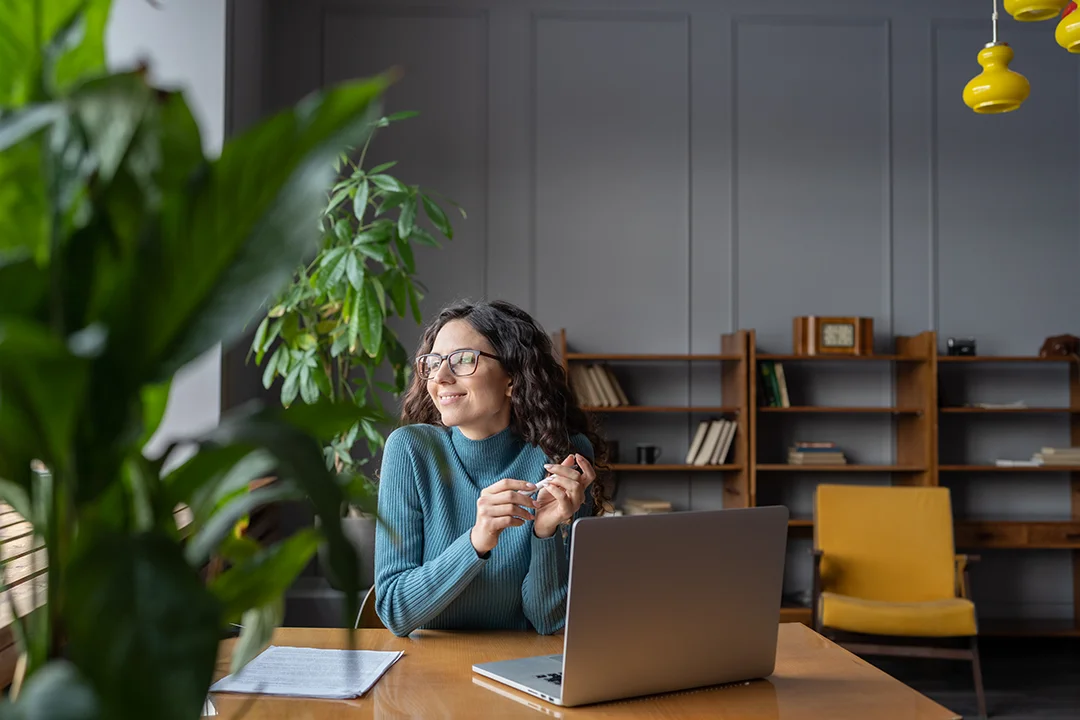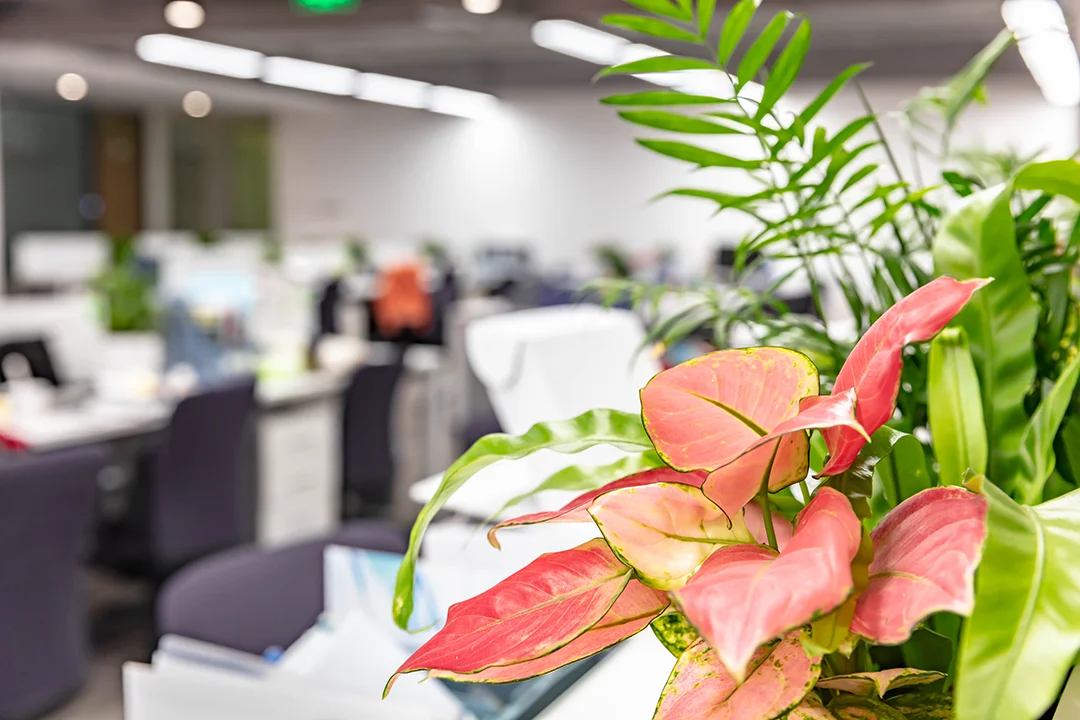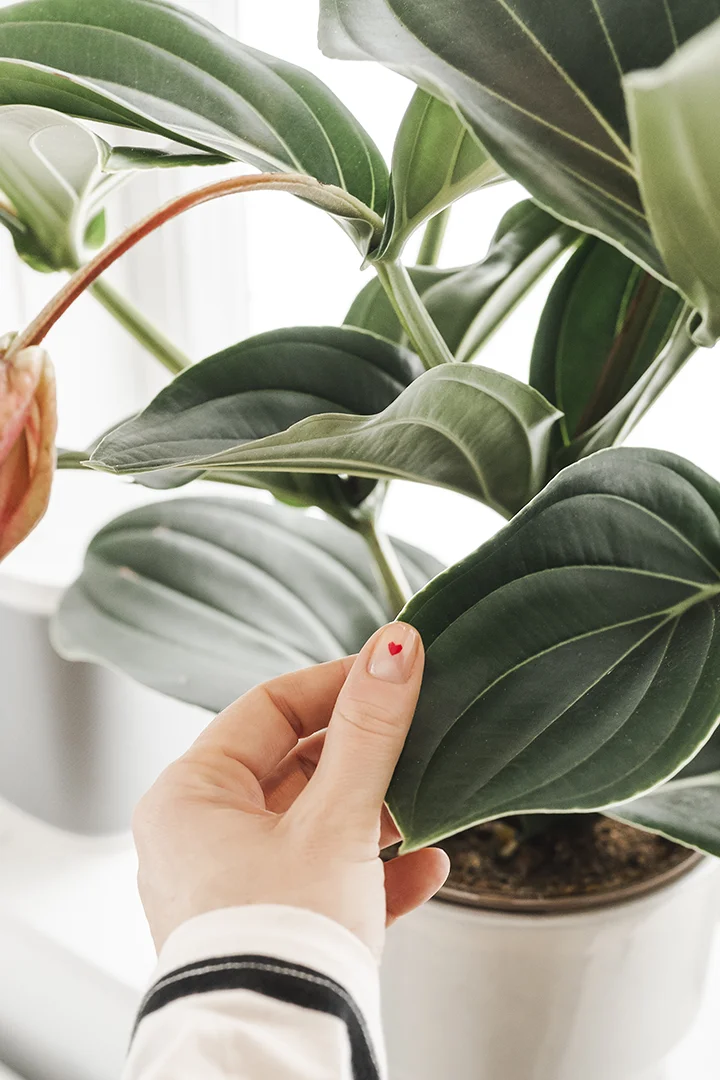
How color psychology shapes your space
The color of the plants in your space play in important role in how they make you feel. In case you didn’t know, here at Plant Solutions we are huge believers in the power of biophilic design! This philosophy has been found to support cognitive function, physical health and psychological well-being. Have you ever wondered how this style of design can offer all these benefits? Color psychology may be your answer!
Color psychology is a growing field of scientific study that delves into why colors evoke certain psychological reactions, moods and emotions. Does a blue room make you feel calm? Do you feel hungrier in a red room? These are some of the effects that have been found to be anecdotally true. So, what are some of the effects you can expect from the natural color of green?
Green and color therapy
Green is considered to represent purity, health and freshness. It is gentle and relaxing yet invigorating and inspires connection. It has even been found to slow down human metabolism and produce a calming feeling! This might be caused by the wavelength that creates the color green. Longer wavelength colors, such as red or orange, are considered arousing because our eyes have to adjust in order to see them. However, colors like green and blue are made up of shorter wavelengths that our eye can more easily interpret. Since our bodies don’t have to work as hard, these colors have a calming affect on us.
The color green is also associated with motivation and a high need for achievement. One study found that participants connected the color red with failure and the color green with success. Think back to your school days: how would you feel if your assignment came back covered in red ink? What about green? This is just a small example of how color can truly affect how we feel.
Transform Your Space Today!
Unlock the benefits of color psychology and biophilic design in your home or office. Let us help you create an environment that boosts well-being and productivity.

Expanding the role of biophilic design in modern spaces
While plants are a central part of biophilic design, the concept goes beyond just greenery. It emphasizes creating environments that foster a connection between humans and nature. This design approach can involve natural materials, light, textures, and even the sound of water, all of which are proven to reduce stress and improve mood. Integrating these elements into workspaces, homes, or public spaces can lead to greater psychological benefits, enhanced creativity, and improved focus.
The role of other colors in biophilic design
Although green takes center stage in biophilic design due to its direct connection to nature, other colors can also play a significant role in enhancing a space. For instance, blue is linked to calmness and serenity, often evoking a sense of openness and relaxation, much like a clear sky or flowing water. On the other hand, earthy tones like browns and tans can create a grounding effect, providing warmth and comfort, reminiscent of natural landscapes.
Color therapy and workplace productivity
Workplaces can integrate these principles to enhance employee productivity and well-being. By applying color psychology strategically, companies can create spaces that boost creativity and focus, reduce absenteeism, and foster collaboration. For instance, spaces with green and blue accents have been shown to increase problem-solving capabilities and calmness, which in turn leads to better decision-making and stress management in high-pressure environments.

The psychological impact of natural patterns
Beyond color, patterns and textures derived from nature also have profound effects on human emotions. Fractals—repeating patterns commonly found in nature, such as the veins in a leaf or the ripples of water—can provide a calming effect, similar to that of seeing plants or greenery. Studies have shown that incorporating these natural patterns into architecture or interior design reduces stress levels and promotes a sense of tranquility. In this way, biophilic design not only involves color psychology but also incorporates the innate human attraction to patterns in nature.
Lighting and its relationship to color psychology
Natural light is another often overlooked component of biophilic design. It enhances the visual effects of the colors used in a space. Rooms that are well-lit with natural sunlight tend to amplify the positive effects of calming colors like green and blue. Conversely, artificial lighting can sometimes distort these effects. In spaces where natural light is not abundant, warm, soft artificial lighting can help mimic the benefits of daylight and enhance the effects of the colors used, particularly in workspaces or relaxation areas.
Color psychology and sustainability
Another aspect to consider is the environmental impact of using natural colors and materials. Many companies are now adopting sustainable practices as part of their biophilic design. Using natural, eco-friendly materials and incorporating sustainable plants into designs not only aligns with the principles of biophilic design but also appeals to a growing demand for environmentally conscious practices. The psychological impact of knowing that a space has been designed with sustainability in mind can further enhance feelings of well-being and social responsibility.

Embracing the power of color psychology and biophilic design
Incorporating color psychology and biophilic design into our spaces offers a multitude of benefits that extend beyond mere aesthetics. By understanding how colors like green and blue can influence our mood, productivity, and overall well-being, we can make more informed choices about our environment.
Biophilic design, with its emphasis on natural elements and patterns, complements this understanding by fostering a deeper connection between people and nature. This approach not only enhances our physical surroundings but also supports our mental and emotional health.
Whether you’re redesigning your home, office, or any other space, integrating principles of color psychology and biophilic design can lead to a more harmonious and fulfilling environment. By doing so, you’re not only creating a visually pleasing space but also contributing to a healthier and more balanced lifestyle.
As we continue to explore and embrace these concepts, it’s important to consider their impact on our everyday lives and strive to create environments that nurture both our physical and psychological well-being.
Ready to Revitalize Your Space?
Fill out the form below to schedule a consultation. Discover how biophilic design and color psychology can enhance your space and improve your quality of life.
